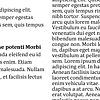UX & SEO: Enemies or The Future
When getting into the complicated web that is … well, the World Wide Web, the first hurdle any business owner faces is the problem of SEO and UX. When constructing a site, the first thing any marketer will tell you is that these two are usually at each other’s throats, both pulling into different directions.
The former focusing on Google’s ever-evolving search algorithm and reeling users towards one’s site and the latter focusing on making the users enjoy the page they landed on and possibly convert. Friends or foes? Let’s find out.
The whos and the whats
First and foremost, it is important to get into the details of each service. As mentioned above, SEO or Search Engine Optimization is the practice of optimizing a site’s content by making search engines associate it with targeted search terms. This is accomplished by organizing the entirety of the site to better fit into i.e. Google’s vision of what a relevant site would look like for the word “apple”.
SEO is a great tool for generating organic visitors to the site but it does little to keep them there when they do land where we want them – this is where UX comes in.
With SEO focusing on satisfying our search engine overlords, user experience focuses on satisfying the average Joe. Keeping with the fishing metaphor, SEO is essentially the bait, UX would be the net. User experience deals with organizing the landing page and other parts of the site stand out and maximize lead conversion.
This can put it directly in conflict with SEO because whatever might be pleasing for you or me won’t necessarily be what Google’s Hummingbird considers relevant or useful. UX covers everything from visual design to outbound links and phrasing, essentially overlapping with SEO and creating friction.
Their impact
Despite their differences, the impact that these two heavyweights have is undeniable. By focusing on SEO, companies can effectively rise to the top of search queries containing their selected keywords. This will essentially pull in much more people and reduce the dependency on traditional online advertising like AdWords.
UX, on the other hand, disregards organic search results and focuses exclusively on closing the deal when users eventually do land where we want them. A good UI and service does wonders for retention and guarantees a higher percentile of satisfied people that end up buying whatever is being offered.
Now, despite pulling in different directions, it turns out that these two aren’t enemies. While it is true that their goals are different, they still end up being two sides of the same proverbial coin. In truth, they really cannot function without one another because it takes both of them for a site to be successful.
Imagine a site that invested heavily in UX and nothing else, it would have an amazing user experience, true, but it wouldn’t get nearly enough traffic to justify itself. Likewise, a SEO-focused site would reel in tons of users only to have them leave when faced with a clunky site that looks like something out the Windows 95 era.
Striking a balance
As one might assume, striking a nice balance between the two ends up being the only solution, we need both sides happy and the only way to achieve that is through cooperation.
A good example of striking a good balance comes from the site WebProfits. They noticed a noticeably higher optin rates and numbers of shares after devoting enough time to design articles instead of just churning out SEO-approved placeholders. Fortunelords’ founder Danny Donchev also spoke up about the importance of UX for SEO, stating that it directly influences bounce rates and the average time people spend viewing your content.
On the flipside, pun intended, we see examples of UX-heavy sites sacrificing some of their design to bolster their SEO rankings and saw staggering amounts of incoming traffic. The folks at Due did just that, stating that their efforts to employ better SEO writers to produce deeper, quality content that pleased Google and Bing enough to skyrocket their visibility and earned them more than a pretty penny.
This is just one of the examples that this side of the coin has, with much more details over at Perth Web Agency. These people have firsthand knowledge of how powerful an equilibrium between UX and SEO can be and how, weirdly-enough, keeping them balanced will actually tip the scales in your favor.
The future
As one might assume, UX and SEO are far from enemies. They might appear as such at face value, but it is our responsibility to look further from that and consider what each one brings to the table. Like any good partnership, they will have conflicting views on how to deal with certain issues, the strength in said partnership comes from their ability to make compromises and meet halfway.
With a good strategy and careful corrections based on metrics, sites can fully utilize the benefits of SEO while still keeping customers happy with a staggering UX when they arrive.







Hey, Ronald,
Another great stuff!! Yes, you are right, SEO and UX is not an enemy of each other, rather they are 2 friends. Without UX, SEO can’t bring a great result. As you said, without UX, the traffic get from SEO will leave the site. Also, UX helps to decrease bounce rate of a site. That is also important for better SEO. Thanks for letting me share my thoughts. Have a great weekend!!
@T I Antor
Thank you for your kind comment :)
Have a nice weekend!